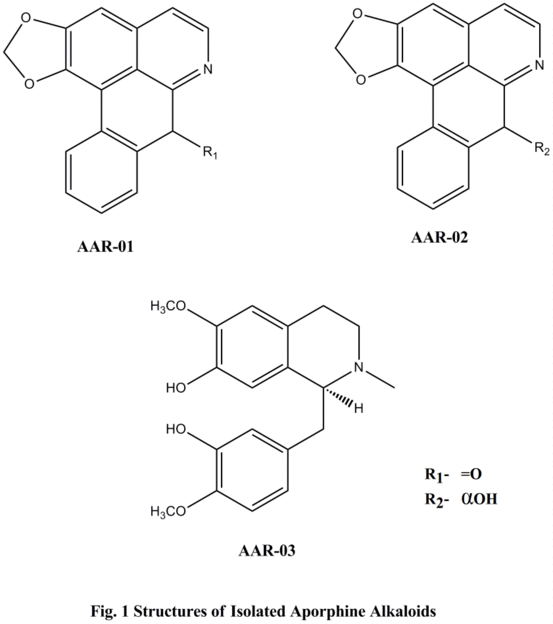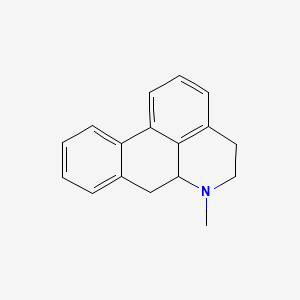Formula C17H17N | Molar mass 235.324 g/mol | |
 | ||
Aporphine is one of a class of quinoline alkaloids. Many different relatives of this compound have been purified from plants. One commonly used aporphine derivative is apomorphine, which can be found in Nymphaea caerulea. Aporphines from other plants include some that occur in extracts of Cassytha species that have been used in African folk medicine to treat cancer and trypanosomiasis. In vitro tests of some of the aporphines from Cassytha filiformis, namely actinodaphnine, cassythine, and dicentrine, on Trypanosoma brucei did show promising levels of activity. Investigation of possible mechanisms revealed that the active compounds bind to DNA and act as intercalating agents, besides inhibiting topoisomerase activity

Aporphine is a 5-HT1a partial agonist with a ki of 80nM and a 5-HT7 antagonist with a ki of 88nM. Aporphine is a Dopamine D1 antagonist with a ki of 717nM and a dopamine D2 antagonist with a ki of 527nM. Aporphine and its related alkaloids bulbocapnine, boldine, glaucine and corytuberine are antipsychotic, exert naloxone-reversible antinociceptive activity and with the exception of corytuberine are anticonvulsant. Some derivatives of aporphine such as S(+)-N-propylnorapomorphine have potential as low side effect profile antipsychotics. S(+)-N-propylnorapomorphine is highly selective for meso-limbic dopaminergic tracts and function as efficacious partial agonists, with no elevation in prolactin.





